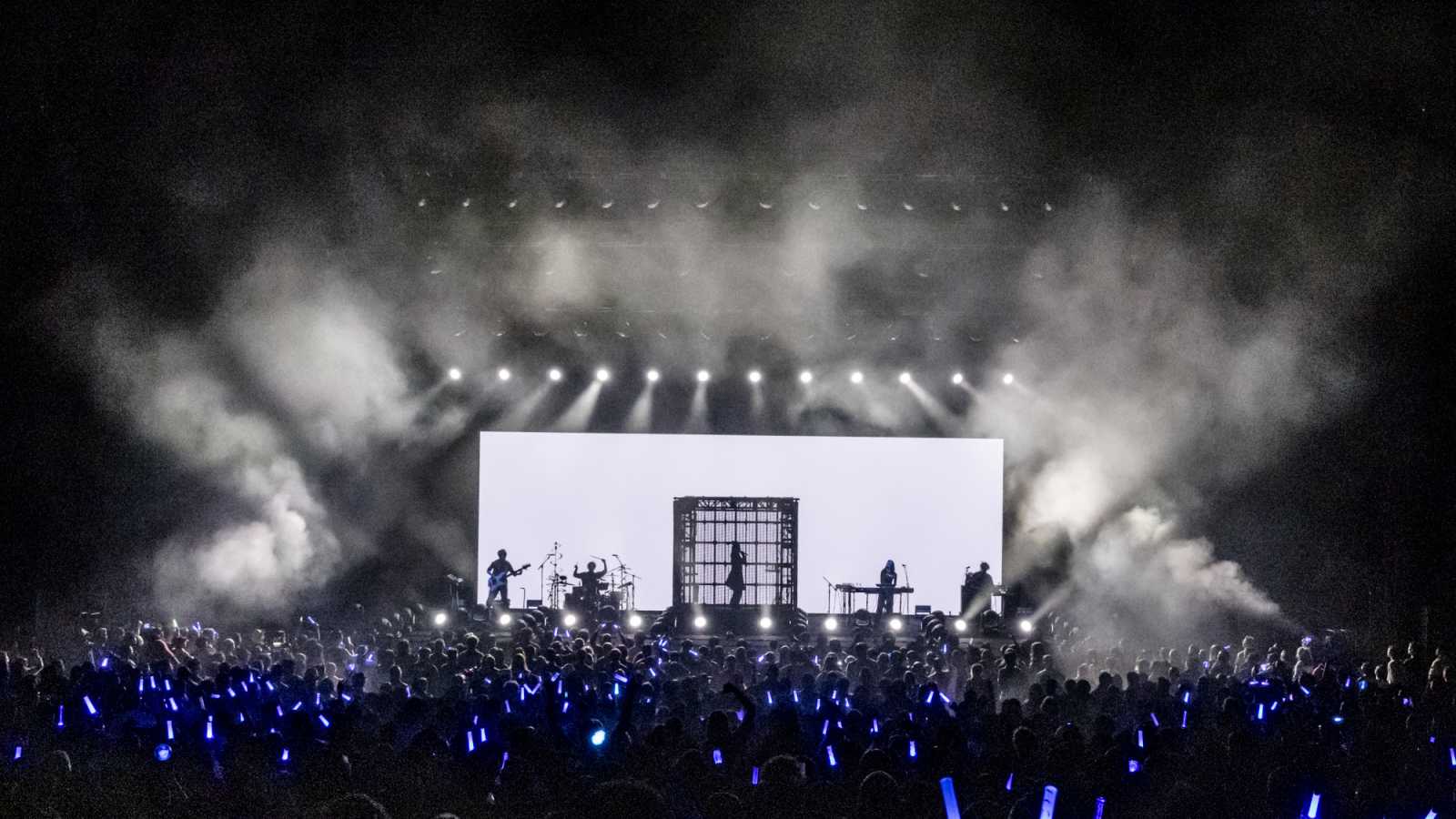RADWIMPS’ lyrics are a hybrid of Japanese and English, and the 2006 album Okazu no Gohan shows its charm.
RADWIMPS released Okazu no Gohan, meaning 'side dish,' in Japan in December 2006. The album was the band's second major album and took fifth on the Oricon Chart, maintaining the position for 148 weeks. A sizable portion of RADWIMP’ songs are sung either partly or entirely in English as Noda, the vocalist, drew inspiration from spending four years in the US.
The album begins softly with a remixed version of Futari goto, which smoothly begins the album as it draws in the audience right away. It grows, blossoming like a flower, and at each verse the melody is transposed up a key with strong guitar to accompany it. Futari goto isshou ni ichido no wappu presents a sepia-toned story featuring love, regret and loss as key components. Nothing outstanding happens as the same relaxed feeling slides away to silence at the end of the track.
A noticeably stirring and raw sound really pushes the second track, Gimi-Gimmick, into the limelight and makes it stand apart from the previous song. It’s easy to forget Noda’s vocals for most of the song and focus on the combination of Kuwahara and Takeda’s skills on guitar. There isn't much that stands out in terms of vocals, but the guitar lines are really something to pay attention to, sounding somewhat like a gritty yet toned-down the GazettE track.
The phrase “wake me up, wake me up” literally wakes the listener and brings immediate attention to 05410-(n). 05410-(n) is a song that makes the listener smile about love. Noda presents a story of young love and making promises. The lines in the first verse use mostly the same words to some ironic effect: “I can be your best friend; I can be your least friend; I can be your boyfriend but I don’t want to be your ex-friend….” Additionally, the live version of 05410(n) is equally as refreshing as the studio version and almost surpasses it.
In continuation from 05410-(n), me me she jumps through time and shows a man remembering the past when two people - the man and another girl, possibly the same characters from the previous track - go on a journey together. During the trip, one leaves for brief moments but always returns. Noda’s voice is calming, almost restrained, but it is also a little overpowering in the wrong places. When the background is laidback and tranquil, the up-beat tone he produces just doesn't mesh. However, it serves to show the imbalance between the two people journeying and why in the end, they remain a memory.
The PV for Setsunarensa is indeed a strange one, which is part of RADWIMPS’ obscure but lovable charm. Focusing on the track itself, Setsunarensa is still interesting. The lyrics explain regret hidden behind anger as seen through the desire of one who wants to go to Hollywood and meet actor Eddie Murphy, only to hear the actor say “chill out kiddy yo, here’s a quarter to buy yourself a grave….” Setsunarensa is one of the more outstanding on Okazu no Gohan and comes highly recommended.
Iin desu ka? is refreshing and gives the listener a chance to breathe after the heavyset tone of Setsunarensa. The opening lines “iin desu ka? iin desu ka?” are followed by a light clap on every second beat, and by the time the chorus hits, both guitars and drums are in full swing. Noticeably, the lyrics in Iin desu ka? play a game like “telephone” and follow a question and answer pattern. Iin desu ka? has a light calypso or reggae feel to it at inconsistent moments, but when combined with Noda’s rap-like vocals and guitar and bass by Kuwahara and Takeda, respectively, it makes for an unusual mix.
Sung completely in English, Sanbyoushi proves to be a perfect ballad. It begins gently and ends in the same manner. Both Noda and the lyrics are most memorable on this track as it showcases his English skills. Stanzas like “I wish that I could be the emblem of your love” are poetic and make the song feel like an ideal soundtrack, like something that belongs in a movie. It details desires and regrets, and above all, memories. Then the soft tones of Yumebanshi coax the listener in. The melody is faint in the beginning, unfolding gently until the pressure grows as a layer of guitar is added. Drums follow, but the melody changes in the bridge close to the end of the song. Noda tears his voice into falsetto after a key change and repeats the chorus a few times. The most breath-taking section is in the last 50 or so seconds where Noda sings “ooh, ooh, ohh” accompanied by one guitar before the full impact of the backing track piles onto his voice with orchestral strings, guitar and bass. This moment is by far the most memorable of the whole track.
Bagubai, the final track on Okazu no Gohan, is slightly longer than usual. It’s the kind of song that should be played as the sun comes out after a devastating storm. The violin heard in the background illustrates just this. The soft, caressing Bagubai also contains a hidden track titled Yonaki, which slips in around 6:40 to the end of the song. Yonaki highlights the outgoing, fun sides of each members’ personalities as they yelp and laugh and make noises in the background. The vibe felt from the short-lived Yonaki is fun, exciting and cheery; it shows the pure fun one can have with music.
Since the release of Okazu no Gohan in 2006, RADWIMPS has released a few singles. Their latest singles Manifesto and Keitai Denwa were released on the same day in June 2010. Each single contains two different tracks that will please the fans.



